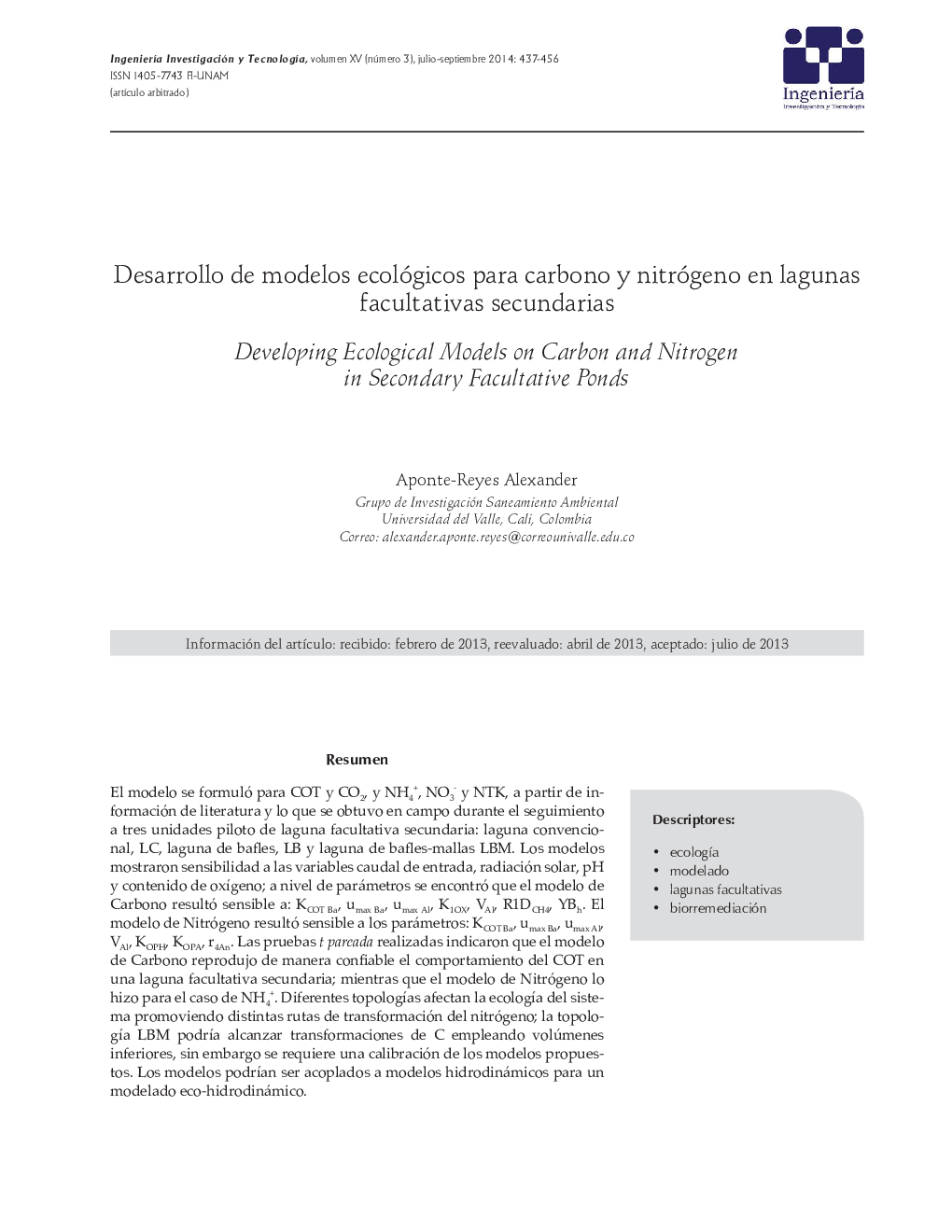| Article ID | Journal | Published Year | Pages | File Type |
|---|---|---|---|---|
| 274951 | Ingeniera, Investigacin y Tecnologa | 2014 | 20 Pages |
ResumenEl modelo se formuló para COT y CO2, y NH4+,NO3− y NTK, a partir de información de literatura y lo que se obtuvo en campo durante el seguimiento a tres unidades piloto de laguna facultativa secundaria: laguna convencional, LC, laguna de bafles, LB y laguna de bafles-mallas LBM. Los modelos mostraron sensibilidad a las variables caudal de entrada, radiación solar, pH y contenido de oxígeno; a nivel de parámetros se encontró que el modelo de Carbono resultó sensible a: KCOT Ba, umax Ba, umax Al, K10X, VAl, RIDCH4, YBh. El modelo de Nitrógeno resultó sensible a los parámetros: KCOT Ba, umax Ba, umax Al, VAl, KOPH, KOPA, r4An. Las pruebas t pareada realizadas indicaron que el modelo de Carbono reprodujo de manera confiable el comportamiento del COT en una laguna facultativa secundaria; mientras que el modelo de Nitrógeno lo hizo para el caso de NH4+. Diferentes topologías afectan la ecología del sistema promoviendo distintas rutas de transformación del nitrógeno; la topología LBM podría alcanzar transformaciones de C empleando volúmenes inferiores, sin embargo se requiere una calibración de los modelos propuestos. Los modelos podrían ser acoplados a modelos hidrodinámicos para un modelado eco-hidrodinámico.
Ecological models formulated for TOC, CO2, NH4+,NO3− and NTK, based in literature reviewed and field work were obtained monitoring three facultative secondary stabilization ponds, FSSP, pilots: conventional pond, CP, baffled pond, BP, and baffled-meshed pond, BMP. Models were sensitive to flow inlet, solar radiation, pH and oxygen content; the sensitive parameters in Carbon Model were KCOT Ba, umax Ba, umax Al, K10X, VAl R1DCH4, YBh. The sensitive parameters in the Nitrogen model were KCOT Ba, umax Ba, umax Al, VAl, KOPH, KOPA, r4An. The test t-paired showed a good simulating of Carbon model refers to TOC in FSSP; on the other side, the Nitrogen model showed a good simulating of NH4+. Different topological models modify ecosystem ecology forcing different transformation pathways of Nitrogen; equal transformations of the Carbon BMP topology could be achieved using lower volumes, however, a calibration for a new model would be required. Carbon and Nitrogen models developed could be coupled to hydrodynamics models for better modeling of FSSP.
